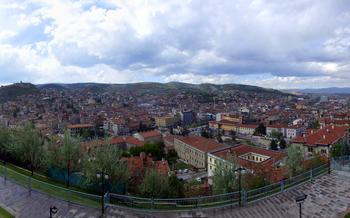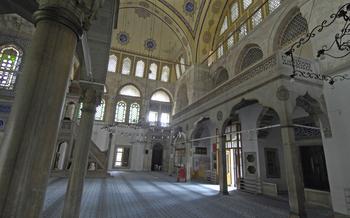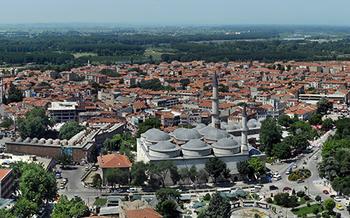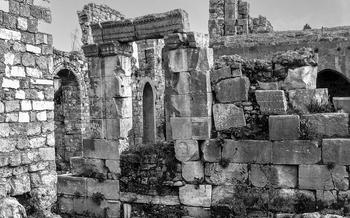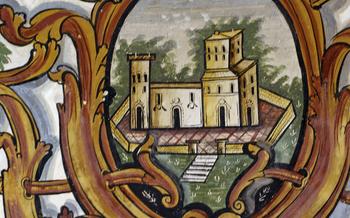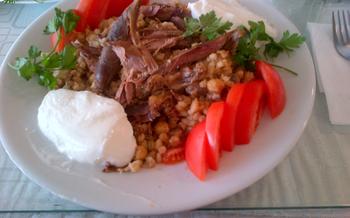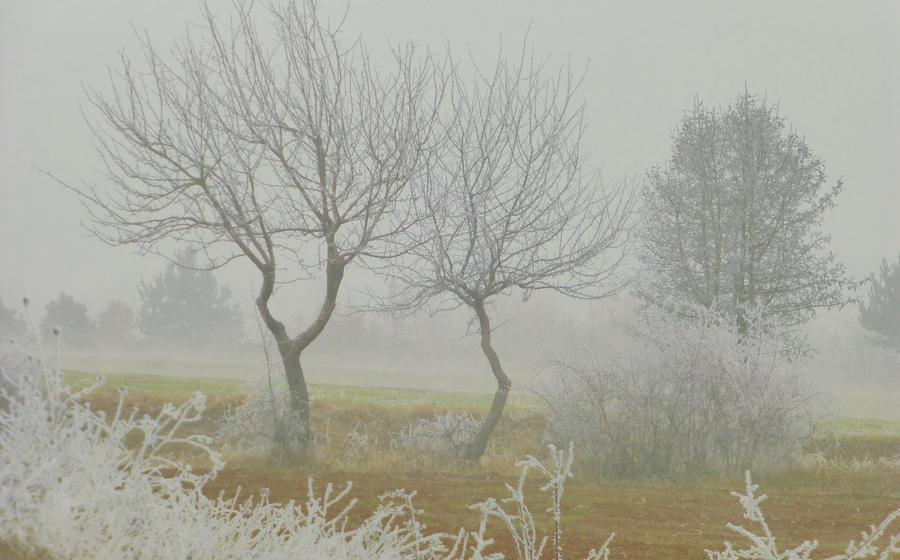
Kastamonu Kırkçeşme
- Kastamonu Kırkçeşme: A Historical Masterpiece
- Location and Accessibility
- Exploring the Architectural Marvel
- Water, the Life Source
- Kastamonu's Urban Fabric
- Symbolism and Folklore
- Historical Significance
- Visiting Tips and Etiquette
- Local Cuisine and Delicacies
- Shopping and Souvenirs
- Events and Festivals
- Photography Opportunities
- Nearby Attractions
- Insider Tip: Unveiling Hidden Treasures
Kastamonu Kırkçeşme: A Historical Masterpiece
The Kastamonu Kırkçeşme, also known as the Forty Fountains, stands as a testament to the rich history and architectural prowess of the Ottoman Empire. Constructed in the 16th century during the reign of Sultan Suleiman the Magnificent, this magnificent fountain has become an iconic symbol of Kastamonu, attracting visitors from far and wide.
Beyond its historical significance, the Kastamonu Kırkçeşme holds immense architectural and cultural value. Its unique design, intricate carvings, and flowing water have earned it a place among Turkey's most notable landmarks. The fountain's harmonious blend of Islamic and Byzantine architectural styles showcases the cultural diversity that has shaped Kastamonu's heritage.
As a symbol of Kastamonu, the Kastamonu Kırkçeşme represents the city's resilience and cultural pride. Its enduring presence has witnessed centuries of change, serving as a gathering place for locals and travelers alike. This remarkable fountain continues to captivate hearts and minds, embodying the essence of Kastamonu's rich history and cultural heritage.
Location and Accessibility
The Kastamonu Kırkçeşme stands proudly in the heart of the city, along the bustling Cumhuriyet Caddesi. Its exact coordinates are 41°22'8"N, 33°46'32"E, making it easily accessible to visitors. The fountain is situated within walking distance from many hotels, guesthouses, and restaurants, allowing for a convenient exploration of the city's center.
Kastamonu is well-connected by road, rail, and air. The city is served by the Kastamonu Airport (KZR), which offers flights to major cities in Turkey. Alternatively, visitors can take a comfortable bus ride from Ankara, Istanbul, or other major cities. The Kastamonu Railway Station provides convenient connections to various destinations across the country.
Upon arrival in Kastamonu, visitors can explore the city's attractions on foot, by bicycle, or by using the local transportation system. The Kırkçeşme is a central landmark, and it is easy to navigate to from any part of the city.
Exploring the Architectural Marvel
The Kastamonu Kırkçeşme stands as a testament to the architectural ingenuity of the Ottoman era. Its unique design and layout are a visual treat, with a central basin surrounded by forty smaller fountains. Each fountain is adorned with intricate carvings and inscriptions, telling stories from history and mythology.
The exterior of the fountain is a masterpiece of Islamic architecture, with its elegant arches and domes. The interior, equally impressive, features a series of vaults and chambers that create a sense of mystery and wonder. The walls are adorned with colorful tiles, adding a touch of vibrancy to the overall design.
The fountain's intricate carvings and inscriptions are a testament to the skill and artistry of the craftsmen who created it. These carvings depict scenes from everyday life, as well as motifs from nature and religion. The inscriptions, written in both Arabic and Turkish, provide insights into the history and cultural significance of the fountain.
The symbolism behind the fountain's design is rich and multifaceted. The number forty, for example, holds great significance in Islamic tradition, representing completeness and abundance. The forty fountains are said to symbolize the forty springs that gushed forth from Mount Sinai when Moses struck the rock with his staff.
The Kastamonu Kırkçeşme is not just an architectural masterpiece; it is also a symbol of the city's rich history and cultural heritage. Its unique design, intricate carvings, and symbolic significance make it a must-see destination for anyone visiting Kastamonu.
Water, the Life Source
Water holds immense significance in Turkish culture, symbolizing purity, abundance, and life itself. The Kastamonu Kırkçeşme was not merely a fountain but a vital source of water for the city's residents throughout history. Its 40 spouts poured forth a continuous flow of fresh, clean water, providing sustenance and refreshment to the community.
In the past, before the advent of modern plumbing and water distribution systems, fountains like the Kırkçeşme played a crucial role in supplying water for drinking, cooking, and various domestic needs. People would gather at the fountain to collect water, socialize, and share stories. It was a place of convergence and community interaction.
Today, while the fountain no longer serves as a primary water source, it continues to flow with a steady stream of water, symbolizing its enduring significance. Visitors can still witness the gentle cascade of water from the spouts, a reminder of the fountain's historical role and the life-giving properties of water.
Legends and stories abound about the water of the Kırkçeşme. Some believe that it possesses healing properties, capable of curing ailments and bringing good fortune. Others claim that drinking water from the fountain will ensure a safe journey and a successful return home. These tales and beliefs add to the mystique and allure of the Kastamonu Kırkçeşme, inviting visitors to experience the magic of its waters.
Kastamonu's Urban Fabric
The Kastamonu Kırkçeşme is an integral part of the city's urban fabric, seamlessly blending into the surrounding historical landscape. Its location at the crossroads of bustling streets and serene alleys makes it a focal point for both locals and visitors. The fountain's elegant design complements the architectural styles of nearby buildings, ranging from traditional Ottoman houses to modern structures.
The fountain's surroundings are a treasure trove of historical and cultural landmarks. The iconic Saat Kulesi (Clock Tower) stands tall, marking the passage of time and adding to the square's charm. The narrow cobblestone streets leading to the fountain are lined with shops, cafes, and restaurants, creating a vibrant atmosphere.
Locals often gather around the fountain, seeking respite from the summer heat or engaging in lively conversations. Children play and splash in the water, adding a touch of merriment to the square. The Kastamonu Kırkçeşme is a place where history and modernity converge, creating a unique urban tapestry.
Symbolism and Folklore
Kastamonu Kırkçeşme stands as a symbol of cultural heritage and folklore in the city. It is believed to be a wishing well, where locals toss coins into the water and make a wish. Legends abound, including one about a young woman who wished for a wealthy husband and threw a golden coin into the fountain. Her wish was granted, and she married a wealthy merchant. This tale exemplifies the fountain's significance in the lives of Kastamonu residents.
The fountain is also associated with local folklore, which includes stories of mythical creatures and enchanted beings. One legend tells of a water sprite residing in the fountain who grants wishes to those who approach with a pure heart. These legends and tales have been passed down through generations and contribute to the fountain's mystique and charm.
Moreover, the fountain holds a special place in Kastamonu's identity and heritage. It is a symbol of the city's rich history and cultural traditions. Locals take pride in maintaining and preserving the fountain, ensuring its legacy continues for generations to come.
Historical Significance
The Kastamonu Kırkçeşme stands as a testament to the rich history and cultural heritage of Kastamonu and the Ottoman Empire. Built during the reign of Sultan Murad III in the late 16th century, the fountain is a remarkable example of Ottoman architecture and engineering. The construction of the fountain was commissioned by a wealthy local merchant named Haci Kasım Bey, who sought to provide a much-needed water source for the city's growing population.
The fountain's construction marked a significant milestone in Kastamonu's history, reflecting the city's growing prosperity and importance as a regional center. The patronage of influential figures such as Haci Kasım Bey and Sultan Murad III highlights the fountain's status as a symbol of power and prestige.
Throughout history, the Kastamonu Kırkçeşme has witnessed numerous historical events and milestones, becoming an integral part of the city's identity. Its enduring presence serves as a reminder of Kastamonu's rich past and its contributions to Turkish history and culture.
Visiting Tips and Etiquette
To fully appreciate the beauty and significance of the Kastamonu Kırkçeşme, it's important to consider a few visiting tips and observe local etiquette.
Best Time to Visit: Aim to visit the fountain early in the morning or late in the afternoon to avoid crowds and capture the best light for photography. The serene ambiance during these times allows for a tranquil and contemplative experience.
Respectful Behavior: Remember that the fountain holds cultural and religious significance, so please dress modestly and behave respectfully. Avoid loud noises, refrain from climbing on the fountain, and respect the privacy of others.
Photography Guidelines: While photography is permitted, be mindful of other visitors and avoid using flash or tripods that may obstruct their view. Ask for permission before photographing individuals, especially women, to respect local customs.
Local Customs and Traditions: When interacting with locals, greet them with a friendly "Merhaba" (hello) and show interest in their culture. Respect their traditions, such as removing your shoes when entering a mosque or home, and avoid discussing sensitive topics.
Local Cuisine and Delicacies
Kastamonu's culinary scene is a delightful blend of traditional Turkish flavors and local specialties. When visiting the Kastamonu Kırkçeşme, be sure to savor the rich gastronomy that the city has to offer.
Indulge in the aromatic "Kastamonu Tandır", a succulent lamb dish slow-cooked in a traditional clay oven. Experience the unique taste of "Çıkmaz Pilavı", a flavorful rice dish with lamb, vegetables, and spices. Don't miss the "Un Helvası", a delectable semolina-based dessert topped with nuts and honey.
For a quick bite, try the "Kastamonu Pidesi", a crispy flatbread topped with your choice of toppings. Accompany your meals with a refreshing glass of "Şerbet", a sweet fruit-based beverage.
To fully immerse yourself in the local culinary experience, visit the charming cafes and restaurants near the Kastamonu Kırkçeşme. Enjoy a leisurely breakfast with "menemen", a flavorful scrambled egg dish with tomatoes and peppers, paired with freshly baked "simit", a Turkish bagel.
Remember to support local artisans by purchasing souvenirs and handicrafts from the markets near the fountain. These unique items, ranging from handwoven textiles to intricate pottery, make for cherished mementos of your visit to Kastamonu.
Shopping and Souvenirs
Kastamonu offers a delightful array of unique souvenirs and handicrafts, perfect for preserving memories of your visit to the city and the Kastamonu Kırkçeşme. Stroll through the local markets and shops near the fountain to discover an assortment of traditional Turkish crafts, handmade goods, and local delicacies. From intricate carpets and colorful ceramics to exquisite jewelry and hand-woven textiles, there's something for every taste and budget.
Don't miss the opportunity to bargain with the friendly local vendors, who are always willing to negotiate a fair price. Embrace the local custom of haggling and enjoy the process of finding the perfect souvenir while supporting local artisans and businesses.
For a truly immersive experience, visit the nearby workshops where you can witness firsthand the artisans creating their beautiful handicrafts. Learn about the techniques and traditions passed down through generations, and perhaps even try your hand at creating your own unique souvenir.
Remember to respect local customs and traditions when shopping. Dress modestly and be mindful of your behavior in the markets. Your respectful demeanor will be appreciated by the locals and will enhance your overall shopping experience.
Events and Festivals
Kastamonu Kırkçeşme is not only a historical monument but also a vibrant venue for cultural events and festivals. Throughout the year, the fountain's surroundings come alive with traditional performances, celebrations, and exhibitions. The most notable event is the annual Kastamonu Kırkçeşme Festival, held usually during the summer months. This vibrant festival showcases the city's rich cultural heritage through music, dance, art, and traditional crafts. Visitors can immerse themselves in the lively atmosphere, watch captivating performances, and experience the warmth of Turkish hospitality.
Other notable events held near the fountain include the Kastamonu International Photography Festival, which exhibits stunning works by local and international photographers, and the Kastamonu Gastronomy Festival, which celebrates the city's delicious cuisine and culinary traditions. These events offer a unique opportunity to delve deeper into Kastamonu's cultural tapestry and create lasting memories. Be sure to check the local event calendar or inquire with the tourist information center for specific dates and schedules.
Photography Opportunities
The Kastamonu Kırkçeşme is a photographer's dream, offering endless opportunities to capture its beauty from every angle. Stand directly in front of the fountain for a symmetrical shot that showcases its grandeur. Move to the side for a dynamic perspective that highlights the intricate details of the carvings. As the sun casts different shadows throughout the day, the fountain transforms, presenting new photographic possibilities at every turn.
For a unique vantage point, climb the nearby hill for a bird's-eye view of the fountain and the surrounding cityscape. This elevated perspective allows you to capture the fountain's relationship with its environment and the bustling life of Kastamonu.
To capture the essence of the fountain, visit during different times of the day. In the morning, the soft light casts a warm glow on the stone, while in the evening, the illuminated fountain creates a magical ambiance. Experiment with different shutter speeds to blur the flowing water, adding a sense of dynamism to your shots.
Don't forget to share your stunning photographs on social media, using relevant hashtags to connect with other travelers and photography enthusiasts. Inspire others to visit this hidden gem and witness its timeless beauty for themselves.
Nearby Attractions
In addition to the Kastamonu Kırkçeşme, Kastamonu offers a wealth of historical, cultural, and natural attractions to explore. Explore the impressive Kastamonu Castle, a symbol of the city's rich history, or delve into the fascinating world of the Kastamonu Ethnography Museum to understand the local culture and traditions. For art enthusiasts, the Kastamonu Museum of Fine Arts showcases a collection of beautiful Turkish art.
Nature lovers can escape to the scenic Ilıca Waterfall, renowned for its stunning cascades and lush surroundings. The Kastamonu Forests offer a tranquil retreat with hiking trails leading to breathtaking viewpoints and hidden waterfalls. Don't miss the opportunity to visit the Seyfe Gölü (Lake Seyfe), a serene lake surrounded by picturesque landscapes.
Create a comprehensive itinerary that allows you to experience the best of Kastamonu. Combine your visit to the Kastamonu Kırkçeşme with other attractions, ensuring a well-rounded and memorable travel experience.
Insider Tip: Unveiling Hidden Treasures
As you stroll through the charming streets of Kastamonu, keep an eye out for hidden gems tucked away just around the corner from the Kırkçeşme. One such treasure is the "Saat Kulesi" (Clock Tower), a majestic structure that stands tall, offering panoramic views of the city from its observation deck. Take the time to climb the winding staircase to the top and soak in the breathtaking vistas.
Another hidden gem is the "Nasrullah Mosque", a beautifully preserved architectural masterpiece from the Seljuk era. Its intricate carvings and serene atmosphere will transport you back in time. Discover its hidden corners and immerse yourself in the rich history of Kastamonu.
For those seeking a unique souvenir, venture into the "Arasta Bazaar", a vibrant marketplace where you can find an array of traditional Turkish handicrafts, from hand-woven carpets to exquisite jewelry. Engage with the friendly locals, haggle for the best prices, and take home a piece of Kastamonu's rich cultural heritage.
With its captivating blend of history, culture, and natural beauty, Kastamonu offers a treasure trove of hidden gems waiting to be discovered. Embrace the spirit of exploration, venture off the beaten path, and create memories that will last a lifetime.

